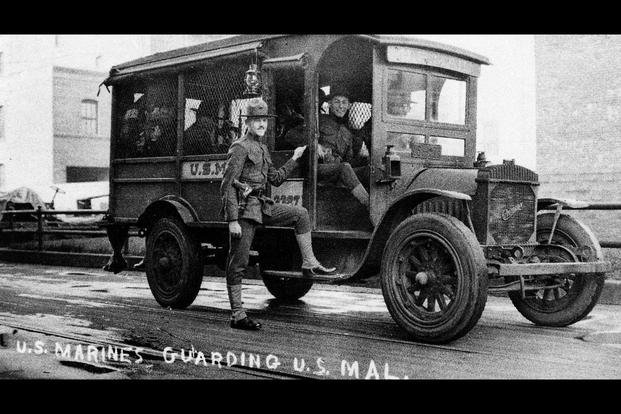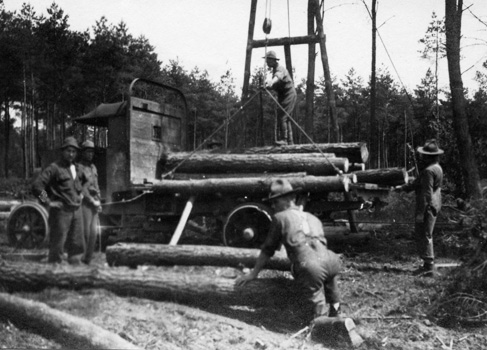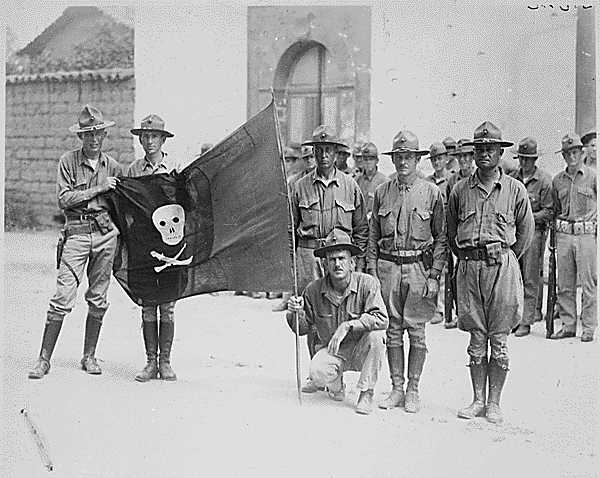The Marines have a very colorful history. But many of the events in Marine Corps history are not well remembered. One such event was the formation of the mail Marines. So today we are going to explore what happened to turn the Marines into postal guards.
The 1920s were a rough time. Prohibition had created an organized crime issue unlike any other. Gangsters and criminals ran around the country, robbing, stealing, and killing. The United States postal service was getting hit hard by thieves, and postal employees were being murdered. Between 1920 and 1921, thieves pilfered over 6,000,000 dollars worth of mail. For reference, that’s over 100 million in today’s money.
In 1920 federal police forces were small and underfunded. The FBI didn’t even carry guns until 1934. Thieves and criminals could escape by just leaving a jurisdiction since local police couldn’t give chase and communication between departments wasn’t open. Postal inspectors didn’t exist. The federal government tried to arm postal employees, but the robberies didn’t stop.
This was a big problem, so what could be done?
Send the Marines
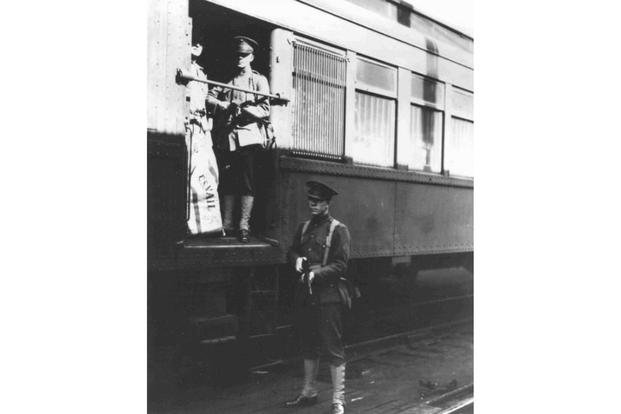
The postmaster general went to President Harding, pleading for relief and help. In response, the president wrote to the Secretary of the Navy Edwin Denby:
“You will detail as guards for the United States Mails a sufficient number of officers and men of the United States Marine Corps to protect the mails from depredations by robbers and bandits. You will confer with the Postmaster General as to the details and will issue the necessary instructions in regard to the performance of this duty.”
With that letter, the mail Marines were born. Fifty-three officers and 2,200 enlisted men were deployed around the country. Secretary of the Navy Edwin Denby was a Marine and was likely proud to send these men to quell the issues at hand. Denby issued the following orders to the Marines.
“You must, when on guard duty, keep your weapons in hand and, if attacked, shoot and shoot to kill. There is no compromise in this battle with bandits. If two Marines guarding a mail car, for example, are suddenly covered by a robber, neither must hold up his hands, but both must begin shooting at once. One may be killed, but the other will get the robbers and save the mail. When our Marine Corps men go as guards over the mail, that mail must be delivered, or there must be a dead Marine at the post of duty. “
Related: The Marine Corps is facing a crisis that will shape its future identity
The mail Marines deploy

The Marines split the country into the west and east and divided the command of the mail Marines. As soon as the Marines assumed their guard duties on the mail, the robberies completely stopped.
Keep in mind that in 1921 the Marine Corps wasn’t that far removed from the First World War. These men had either battlefield experience or had been affected by the cultural readiness of the Marine Corps in a post-WWI world. They were well armed with Winchester 1897 shotguns and M1911 handguns. The Winchester M97 trench gun had become famous during World War I for its close-range killing potential.
The shotgun as a weapon had long been the tool of choice for guards. Coach drivers in the Wild West famously carried short-barreled, 12-gauge, double-barrel shotguns for similar duties. These were man-stopping weapons, and each trigger pull fired nine .33 caliber buckshot pellets. At that time they were te most devastating close-range weapons available.
Mail Marines carried their shotguns with a full magazine tube but with an empty chamber. It bears mentioning that the M97 was not drop-safe, so the chamber was empty as a safety precaution.
Further, their sidearm, the M1911, was very modern by the day’s standards. It fired a powerful 230-grain, .45 caliber projectile. These guns held more rounds than revolvers and were much quicker to reload. The Marines carried them cocked and locked with the safety on. Reportedly they tuck the flap portion of their holsters away for a quick draw.
So, naturally, the presence of the Marines intimidated all would-be thieves.
Related: Quiet Special Purpose Revolver: The tunnel rat’s lost sidearm
Send the Mail Marines… again
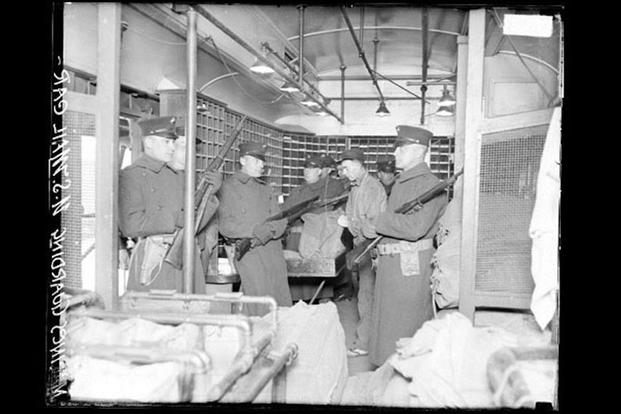
After immediately shutting down postal robberies, the Marines held their guard duties until 1922. Then they withdrew and went back to normal duties. However, in 1926 the brutal slaying of a mail truck driver and rising thefts saw the mail Marines redeploying on the order of President Calvin Coolidge.
Robberies once again halted. The Marines deployed this time included famed Marine Officer Smedley Butler.
During the entire time the Marines guarded the mail, there was only one robbery attempt, but the train was empty.
At the beginning of 1927, the Marines returned to their bases, and some deployed across the world. By that point, the post office had armed and trained guards to replace the Marines.
Every clime and place
This was a short story in the long history of the United States Marine Corps.
It’s an interesting story that reflects the Marine Corps’ flexible nature and storied history of solving problems both big and small for their country.
